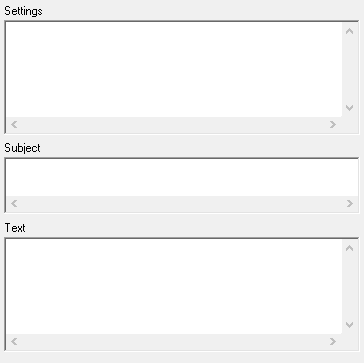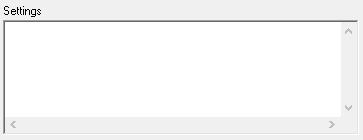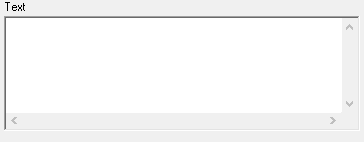
All Templates have three sections:

Settings variables (also called parameters) are used to turn settings on and off and are used to control the behavior of whatever you're interacting with.
The Settings template is unique in that variables specified in this section are cumulative. So, if you have Settings variables specified in the Global template and have completely different variables specified in a Carrier level template, all Settings specified are respected. However, if you have the same variable specified by multiple Settings templates, the highest order template's value will always be used.
For more information, see the Template Settings section.

NOTE: Methods of delivery (protocols) that do not use subject lines do not reference this section of the template in any way.
The Subject section of a template controls the behavior of any subject line processed by this template. Macros can be used to insert information in to the subject line, like the date, time or other pertinent information. This template cannot use or reference parameters and will only accept macros.
Subject templates will override templates of a lower order. For example, a Recipient level subject template will override any Carrier, Connector, Interface or Global subject.
For more information, see the Subject Template section.
•Text

The Message section of the template controls the output and format of the body of any message controlled by this template and references Macros. A Macro variable is an inserted value to control, modify and specify the output of a message. The Message section of a Template should not use or reference any Setting variables and must only use Macro variables. Text templates will override templates of a lower order. For example, a Recipient level text template will completely replace the subject line for that recipient and will override any Carrier, Connector, Interface or Program level Subject template you've applied.